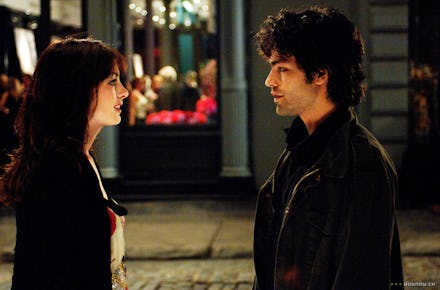10 Years Later, 'The Devil Wears Prada' Is Nearly Perfect — Except for One Key Thing

When I first saw The Devil Wears Prada in 2006, it changed the way I thought about fashion. Watching Andy Sachs (Anne Hathaway) learn about how this one industry touched so many parts of the world — from the runways of Paris to the cerulean sweater sitting on her back — shifted my own view. It made me respect the fashion press for the powerhouse it is.
But even separate from that personal impact, The Devil Wears Prada is just a great movie. It uses its four principal characters — Andy, Miranda Priestly (Meryl Streep), Emily Charlton (Emily Blunt) and Nigel (Stanley Tucci) — to tell a deeply compelling tale about personal desire and how it affects relationships. Andy is good at what she does, very good; yet she finds herself becoming like her boss, Miranda, the woman she detests the most.
Complete with lavish costumes, a funny, tight script and perfectly pitched performances, The Devil Wears Prada is practically a perfect movie. Almost every minute of it is a delight to watch, even 10 years after its release.
But then there's the boyfriend plotline.
As played by Adrian Grenier (late of Entourage), Nate is nearly a movie-ruining character. He's a mopey jerk who sees Andy changing as a negative. His awfulness has caused everyone from CollegeHumor to the Toast to take their swipes at him.
At a dinner, he and their mutual friends (Tracie Thoms and Rich Sommer) tease Andy and keep her phone away from her when her boss is calling. When she misses his birthday for a work event — a fabulous gala, no less! — he sits in the dark waiting for her to come home, then whines about going to bed. He's generally insensitive, and a drag on the narrative.
Yet Nate must exist, because the plot demands it. The Devil Wears Prada is ultimately not about making one's work life co-exist with a personal life. It's about making a choice between those two — a choice women are still forced to make in real life.
The ending of The Devil Wears Prada is a muddled one. Walking away from Miranda and her job with Runway, the fashion magazine, is seen as a victory for Andy. She said no, and now she's going to work for a local paper doing the journalism she wants to do. Theoretically, that should play as an empowering moment of self-discovery.
Instead, she's seen groveling to Nate, who's moving to Boston. What is she apologizing for? Valuing her work life? Not scheduling her life around his? If Nate were depicted as this amazing boyfriend, one who bended over backward giving of himself to make her dreams come true, this would maybe be more understandable.
That's not the case. From the very beginning, he makes jokes about Runway and fashion, even as her interest shifts. He expresses frustration that she's no longer the kind of girl who will make jokes about fashion with him. He rejects her evolution because it's not what he likes. That's not love, or a healthy relationship. That's bullshit, and it's disappointing the movie takes his side.
Aline Brosh McKenna's script is full of witty dialogue and sharp observations about the fashion world — which is why it's so disappointing that it all centers on a false binary. "Work or personal life" is a cliché, not a choice, and Andy certainly shouldn't be judged for placing importance on getting ahead at work. Of course, the choice is a carry-over from Lauren Weisberger's original book, but McKenna changed plenty in the adaptation. It's disappointing she didn't change this.
It's still a fabulous film, one that changed the way people think about fashion. Yet were The Devil Wears Prada made today, I'd hope it could come up with a more interesting conflict than "love or work." These characters and the world the filmmakers created deserve a better story than that.
Read more: